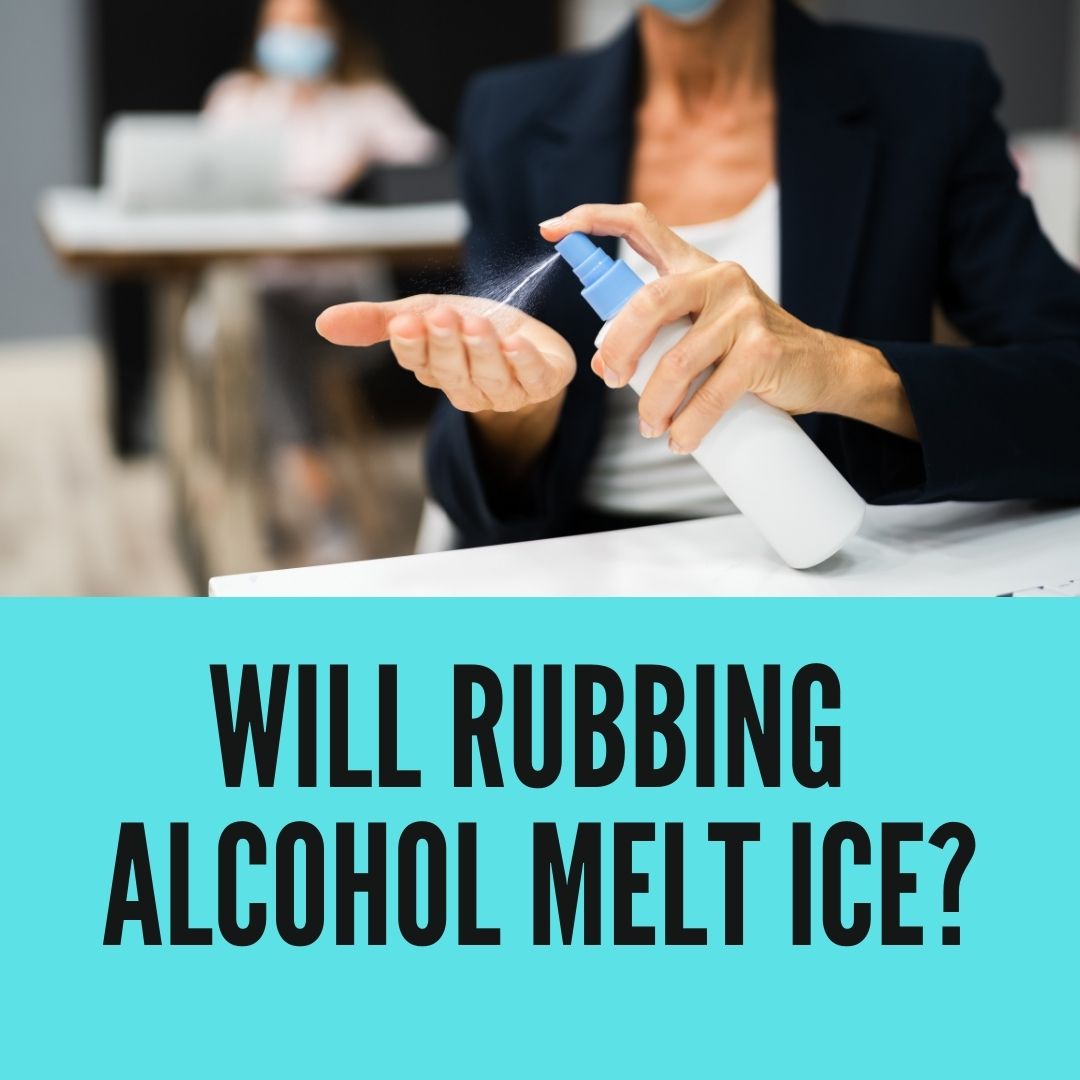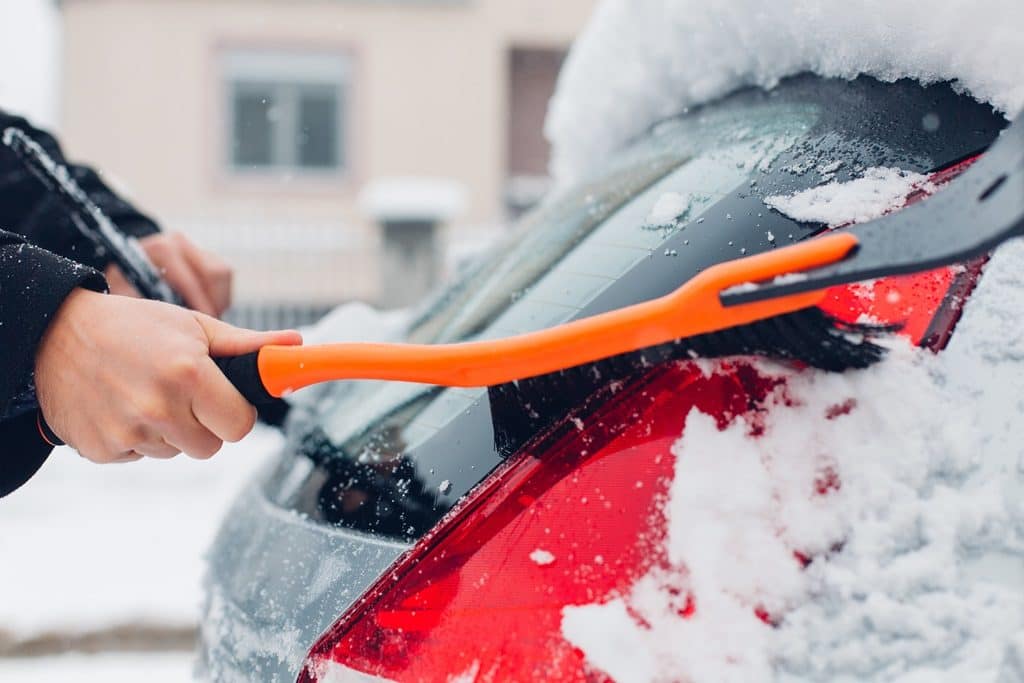
There are plenty of substances that we can find in our cabinets that are far more versatile than we would expect them to be, and instead of wasting money on a purpose-built substance, it’s easy to just co-opt things you already have.
This has led many people to ask the question of whether they can expect rubbing alcohol to melt ice.
Rubbing alcohol will melt ice. Rubbing alcohol is the main ingredient acceptable in many homemade solutions to melt ice during the wintertime. The major factor that makes it so easy for rubbing alcohol to melt ice is because it features a lower freezing point than water.

As with anything based on science, it’s a little difficult to give you a quick summary of what happens when rubbing alcohol is mixed with ice over the course of a couple of sentences.
If you’re interested in the science behind why this works and how you can make your own ice melt solution, then keep reading.
Will Rubbing Alcohol Melt Ice?
We’ve all been in a position where it snowed overnight and then melted and refroze over a period of a few hours, leaving the exterior of your house as slick as a skating rink.
If you’re fresh out of salt in a situation like this, you may find yourself scrambling for a way to deal with the ice without breaking a hip.
You may have heard stories about how rubbing alcohol is an effective way to melt ice, and I’m proud to report that it’s more effective than it may sound.
Rubbing alcohol is great at melting ice because of its lower freezing point, meaning that it will lower the melting point of water when mixed with it.
Since ice is just frozen water, you’ll make it easier to melt when adding rubbing alcohol to it.
This will make the ice melt at dramatically higher temperatures, meaning that the ice may reach the point where it can melt at the ambient atmospheric temperature.
You may be wondering why the water/ice doesn’t freeze when mixed with the alcohol, and that’s largely due to the same reason why something like vodka won’t freeze in the freezer.
So that liquids can freeze, they will need to form crystals and gradually become solid, but this isn’t easy in an alcohol-water mixture.
Rubbing Alcohol and Crystallisation
The presence of alcohol means that the liquid is less likely to form crystals, therefore becoming a lot less likely to freeze in the first place.
This is because it’s more convenient for the liquid to stay in its original liquid state, even though it seems like it would be common sense for it to crystallize.
Alcohol and water have some pretty strange interactions with each other because both of these substances can dissolve in one another.
However, they tend to act the same whether alcohol dissolves in water or if water dissolves in alcohol, when this happens, the alcohol ends up between water molecules.
With the alcohol molecules situated between the individual water molecules, they interfere with the formation of crystals, which makes it much harder for the water to freeze independently.
However, if you reach the point where the alcohol can also freeze, then you’ll find that the entire solution will turn solid.
That being said, you’ll need to get to the freezing point of rubbing alcohol and not water for this to be the case, which is significantly lower.
In most cases, ice that you’ll find on the ground during the winter won’t be cold enough to instantly freeze alcohol before the rubbing alcohol lowers its melting point.
This is why rubbing alcohol and water won’t instantly freeze when you pour them on ice, even though the ice may be at a temperature where it could freeze the water but not the alcohol.
For the solution to freeze, you’ll likely need to reach temperatures of about -40, which are hard to get to in most habitable places.
If you want to make an effective mixture of alcohol and water that will be able to melt ice, then you’ll need to be sure that you use enough alcohol in the mix to ensure that the freezing point is above the ambient temperature of the ice.
At lower temperatures, you’ll likely be able to get away with using a smaller amount of alcohol.
Try experimenting to figure out exactly how much rubbing alcohol you’ll need to add to the solution so that you don’t end up just adding more ice on top of the ice that’s already there.
How to Make an Alcohol Mix to Melt Ice
Now that we’ve addressed the science behind why it’s possible to melt ice using rubbing alcohol, let’s take a look at what you’ll need to do to make a mix that can eat through the ice that’s endangering everyone outside of your house.
You’ll want to use isopropyl alcohol for this mixture if you can get your hands on it because iso alcohol tends to feature a lower freezing point than ethanol.
However, if you can’t find isopropyl, then ethanol will likely be good enough to melt ice at temperatures that are still relatively low, especially compared to water.
Here are the ingredients that you’ll want to use in your homemade ice melting solution to melt the ice and to ensure that it doesn’t end up coming back with a vengeance:
- Hot water (½ gallon)
- 70-99% isopropyl rubbing alcohol (1 tablespoon)
- Biodegradable dish soap (1 teaspoon)
Mix all of these ingredients together and you’ll have yourself a solution that can effectively eat through most of the ice that you’ll encounter on your walkway and driveway.
Using hot water is more effective because it will transfer its heat to the ice that’s already out there, gradually melting it.
You’ll also want to use a higher concentration of alcohol, if possible since that means there’s less water in the solution. Finally, the dish soap will help ensure that the ice doesn’t form again.

My name is Logan, and I’m a 36-year-old dad who owns a small pressure-washing company in the suburbs of Atlanta, Georgia. My main goal with rubbing-alcohol.com is to show you how versatile isopropyl rubbing alcohol can be! I hope. You find it useful.
